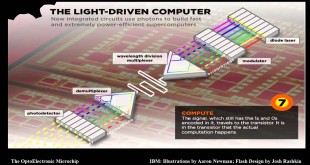Moore’s Law which stated that the number of transistors on a chip will double approximately every two years has been the driver of semiconductor industry in boosting the complexity, computational performance and energy efficiency while reducing cost. The increase in computing performance of electronic computers is becoming more and more …
Read More »Recent Posts
Driverless cars vulnerable to hacking and could be used to carry out suicide attacks, Researchers developing new security solutions
Automotive industry is currently undergoing an electrification process. In a few years, every new vehicle sold will have some degree of autonomy built in. Carmakers from Google to Apple, Tesla to Volkswagen are trying to make drivers obsolete, handing control of the wheel to a computer that can make intelligent decisions …
Read More »Project Maven accelerated weaponizing Artificial Intelligence for the US military, was it used to kill Iran’s nuclear scientist
DoD collects loads of data from satellites, drones and Internet-of-things devices. But it needs help making sense of the intelligence and analyzing it quickly enough so it can be used in combat operations. But, the sheer volume of video content produced makes identifying, assembling and delivering actionable intelligence — from …
Read More » International Defense Security & Technology Your trusted Source for News, Research and Analysis
International Defense Security & Technology Your trusted Source for News, Research and Analysis



